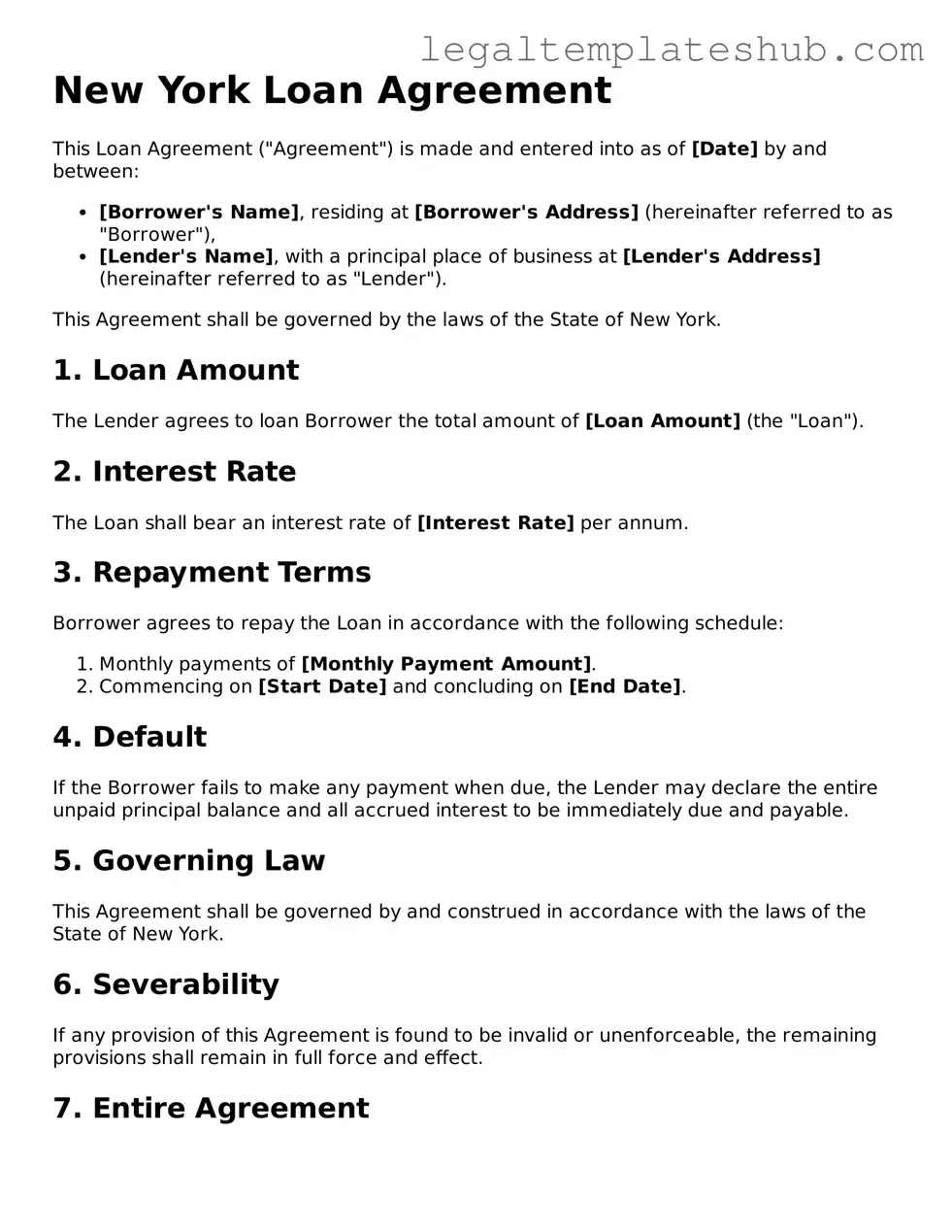Printable Loan Agreement Document for New York
The New York Loan Agreement form is a legal document that outlines the terms and conditions under which a borrower receives funds from a lender. This form is essential for ensuring that both parties understand their rights and obligations in the transaction. To get started, fill out the form by clicking the button below.
Access Editor
